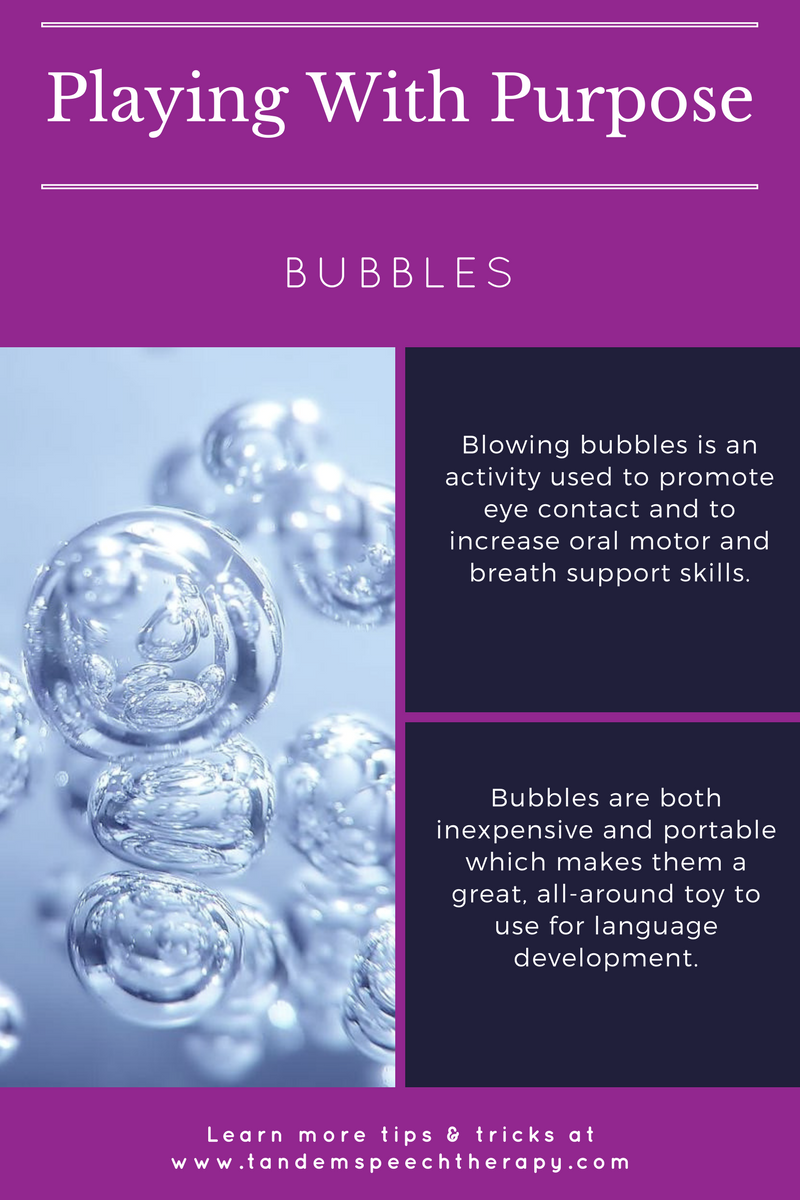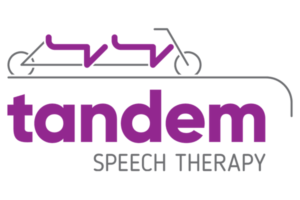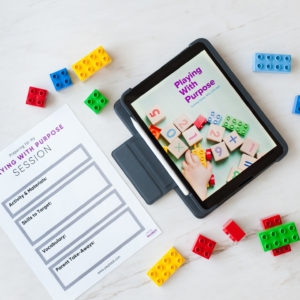Children love to blow bubbles, watch the bubbles float up and down, pop bubbles and step on the bubbles over and over again. By blowing bubbles, you can quickly gain and hold a child’s attention or calm or engage a fussy child. You can work on early words and concepts, practice eye contact and turn taking, work on speech sounds and lip rounding – all while having fun!
The Hanen Centre refers to bubbles as a “people toy.” This means that they require adult help and thereby provide lots of opportunities for you and your child to interact. Since bubbles are engaging, they give your child a reason or purpose to communicate.

If you have not seen touchable bubbles yet, then prepare to be amazed. These bubbles are long-lasting and stackable. The bubble solution is a bit thicker, and the bubbles can last for hours without popping. I often challenge kids to see how many bubbles they can stack on the tip of their finger.
Top 5 Tips for Playing With Purpose when Bubble Blowing
- Bubbles are a fun activity to promote eye contact and joint attention in young children. Start by engaging your child in a fun bubble blowing game. Blow the bubbles once and then pause or wait. Watch for your child’s anticipation of more bubbles. Sit face to face with your child so that he/she can look at you and wait for eye contact before you blow more bubbles. The eye contact is their communication. It’s no different than a child using the word “bubbles” in this instance. Praise your child by saying something such as, “I like how you told me you wanted more bubbles.”
- Did you know that bubble blowing is useful as an abdominal workout?! Use bubble blowing to strengthen abdominal muscles and breath support for sustained speech. Strong abdominal muscles can help increase sentence length. Encourage your child to blow consistently longer streams of bubbles each time you practice. To kick it up another notch, have your child sit on a balance ball while they are blowing. This will strengthen the abdominal muscles too.
- Bubble blowing is a good activity to target other oral motor or mouth skills. Blowing exercises increase strength in the tongue for producing the sounds at the back of our mouth like consonants K and G. It’s also good for working on lip rounding which is necessary for the consonant sound W and the vowels ‘oo’ and ‘oh.’ If you see that your child is using more of a flat lip posture, use your hands to gently push near their lips to encourage the lips to push forward into a circle. If this doesn’t work, try having them wrap their lips around a wide straw (McDonald’s straws work great) that has been cut to about 2″ in length, then with their lips around the straw have them blow the bubbles through the wand. The straw positions their lips into the correct posture for blowing.
- You can teach a variety of action words or verbs and descriptor words while blowing bubbles. Vocabulary can include the following: want, pop, blow, again, dip, all done, up, down, in, out, on, off, round and round (when turning the lid), wet, sticky, big, and small. You can also practice using the word “go” in a fun phrase completion activity by saying “Ready, set, go” with excitement. Then repeat it and pause after the word “set” and wait to see if your child will fill in “go” before you start blowing the bubbles again. Remember to keep your language level at your child’s level.
- Bubbles are an excellent tool for practice and teaching turn taking. Basic turn taking routines teach kids the skills for conversational turn taking. Include modeling or teaching of ‘your turn’ and ‘my turn’ while handing the bubble bottle back and forth. Turn taking does not have to be limited to just the blowing, take turns popping the bubbles too.
Most importantly, use bubbles because they are fun and kids love them.
Want to learn more strategies for playing with bubbles?
Start Playing With Purpose
Learn how to purposefully and intentionally interact with your child during play and help them increase opportunities for speech and language development with our Playing with Purpose book!












